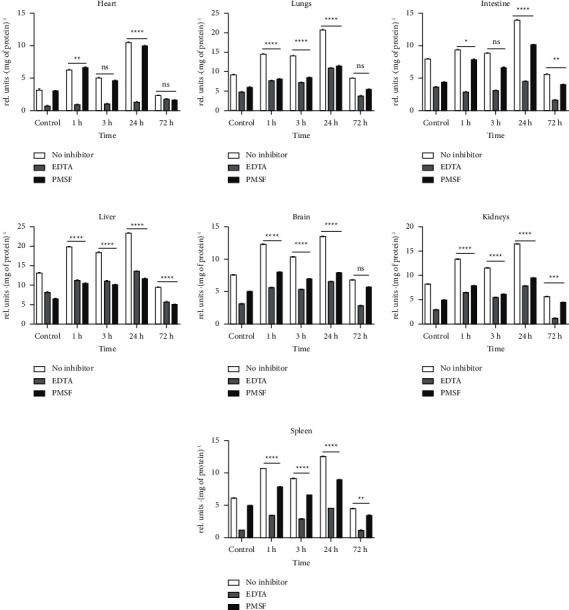The Activity of Metalloproteases and Serine Proteases in Various Organs after Leiurus macroctenus Envenomation.
IF 3
Q2 TOXICOLOGY
引用次数: 0
Abstract
Background Scorpion stings may be life-threatening since their venoms are comprised of a wide range of toxins and other bioactive molecules, such as enzymes. At the same time, scorpion envenomation may increase matrix metalloproteases (MMPs) levels, which enhance proteolytic tissue destruction by venom. However, investigations on the impact of many scorpions' venoms, such as those of Leiurus macroctenus, on tissue proteolytic activity and MMP levels have not yet been conducted. Methods and Results The present study aimed to examine the total proteolysis levels in various organs after Leiurus macroctenus envenomation and evaluate the metalloproteases and serine proteases' contributions to the total proteolytic activity. Changes in MMPs and TIMP-1 levels were tested as well. Envenomation led to a significant increase in proteolytic activity levels in all assessed organs, mostly in the heart (by 3.34 times) and lungs (by 2.25 times). Conclusions Since EDTA presence showed a noticeable decrease in total proteolytic activity level, metalloproteases appeared to play a prominent role in total proteolytic activity. At the same time, MMPs and TIMP-1 levels were increased in all assessed organs, suggesting that Leiurus macroctenus envenomation causes systemic envenomation, which may induce multiple organ abnormalities, mostly because of the uncontrolled metalloprotease activity.

大鲵毒杀后各器官金属蛋白酶和丝氨酸蛋白酶活性的研究。
背景:蝎子螫伤可能会危及生命,因为它们的毒液由多种毒素和其他生物活性分子(如酶)组成。同时,蝎子中毒可使基质金属蛋白酶(MMPs)水平升高,从而增强毒液对蛋白水解组织的破坏作用。然而,许多蝎子的毒液,如大毒蛇的毒液,对组织蛋白水解活性和MMP水平的影响尚未进行调查。方法与结果:本研究旨在检测大鲵下毒后各器官总蛋白水解水平,并评价金属蛋白酶和丝氨酸蛋白酶对大鲵下毒后总蛋白水解活性的贡献。同时检测MMPs和TIMP-1水平的变化。中毒导致所有被评估器官的蛋白水解活性水平显著增加,主要是心脏(增加3.34倍)和肺(增加2.25倍)。结论:EDTA的存在使总蛋白水解活性显著降低,金属蛋白酶在总蛋白水解活性中起重要作用。同时,MMPs和TIMP-1水平在所有被评估器官中均升高,提示大黄颡鱼中毒可引起全身中毒,并可能引起多器官异常,主要原因是金属蛋白酶活性失控。
本文章由计算机程序翻译,如有差异,请以英文原文为准。
求助全文
约1分钟内获得全文
求助全文
来源期刊

Journal of Toxicology
TOXICOLOGY-
CiteScore
5.50
自引率
3.40%
发文量
0
审稿时长
10 weeks
期刊介绍:
Journal of Toxicology is a peer-reviewed, Open Access journal that publishes original research articles, review articles, and clinical studies in all areas of toxicological sciences. The journal will consider articles looking at the structure, function, and mechanism of agents that are toxic to humans and/or animals, as well as toxicological medicine, risk assessment, safety evaluation, and environmental health.
 求助内容:
求助内容: 应助结果提醒方式:
应助结果提醒方式:


